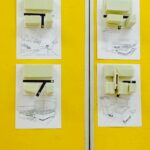If this week had a theme it would be education, may be learning or questioning would be closer.
It was an eye-opening last few days , bookended by two events – a generous invite to review the semester -end work by Wits honours students and at the other end of the spectrum- the more daunting invite to give a talk from the entrepeneueral perspective at the Smart a procurement conference.
Feel free to ask what this architect was doing at inference sponsored by a major bank, filled with intimidating corporate-types that provoked a distinct bout of fashion insecurity that was overcome by the weak mantra” at least We can draw… At least we draw…”
The intention of the conference was to bring together big business and the small entrepreneur, in business speak- the SMME.
The invite request was to highlight, to the procurement officers of big business – Lemon Pebble Architects’s entrepeneueral journey and it’s challenges from the perspective of the small business.
To put it in context,so here’s the stats part :
- Only 14% of SA’s population intend to open a business in the next three years (compared with 27% in other emerging economies)
- Only 2% of SA’s population have firmly established small businesses (compared with 8% average of its peers)
- Between 2005 and 2011 SMME’s created 75000 jobs, but also destroyed 111000 jobs per annum
Waiting to say my nervous – bit , what struck me most sitting in elegant conference surrounding,
Was how out of my depth I actually was.
The corporate a speak was a clear divider between me and them.
The numbers was mind-boggling.
The percentages eye-opening.
The vision if the economy enormous.
And it was all happening without us.
Without the architects.
I had an epihimany.





